Does the Groom Walk Down with His Mother? Wedding Processional Traditions Explained
When planning a wedding, many focus on the journey of the bride down the aisle, but the entrance of the groom is equally significant. Tradition varies around the world, but you might be wondering if the groom should walk down with his mother. This practice can vary depending on cultural norms, family preferences, and the type of ceremony. In many ceremonies, it is common for the mother of the groom to escort her son down the aisle, symbolizing the parents’ support and blessing of the marriage.
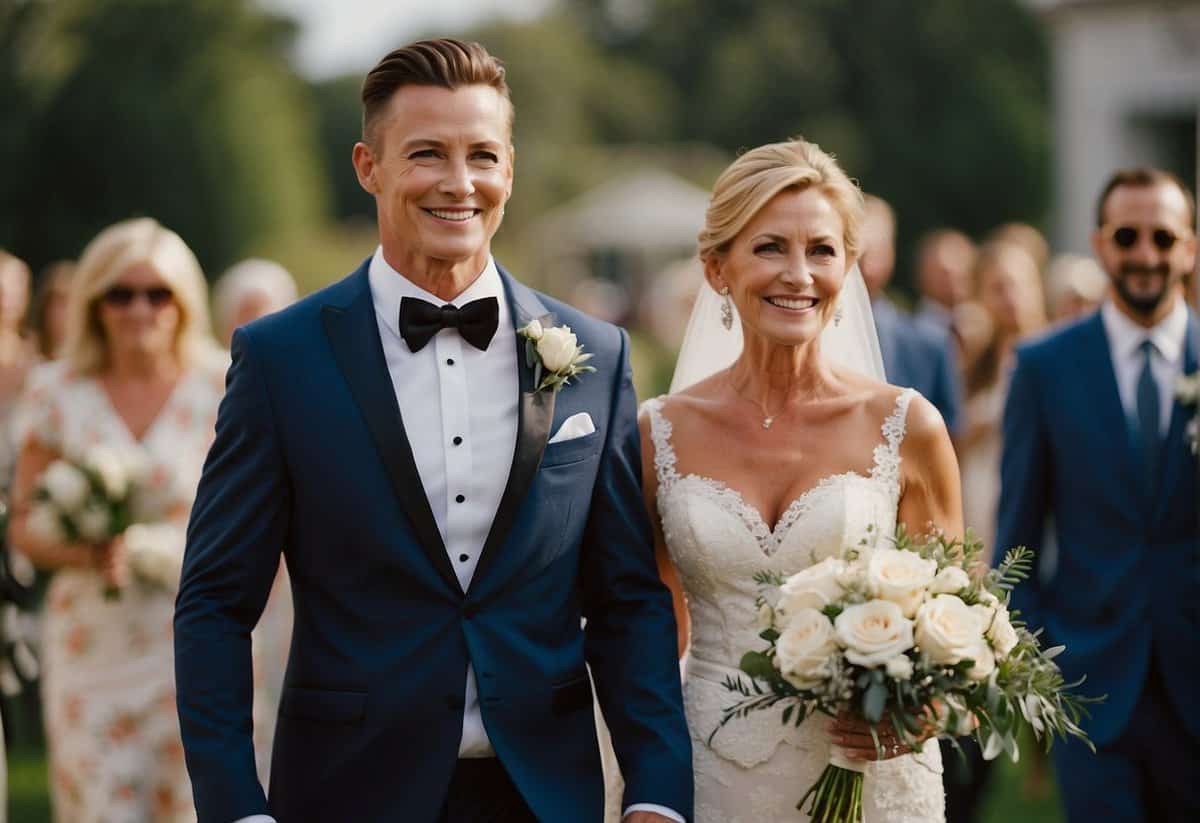
However, as wedding customs evolve, so do the roles within the ceremony. Nowadays, it’s not uncommon to see the groom walking down the aisle unaccompanied, with both parents, or even with another significant family member or friend. The decision is a personal one and can be tailored to reflect the relationships and values that are most important to you. Whether your ceremony is traditional or non-traditional, the key is to ensure it feels right for your unique occasion.
Key Takeaways
- The groom walking down the aisle with his mother is a meaningful tradition, but not mandatory.
- Groom’s processional can be customized to reflect personal and family preferences.
- Modern ceremonies often embrace a variety of formats for the groom’s entrance.
Traditional Processional Order
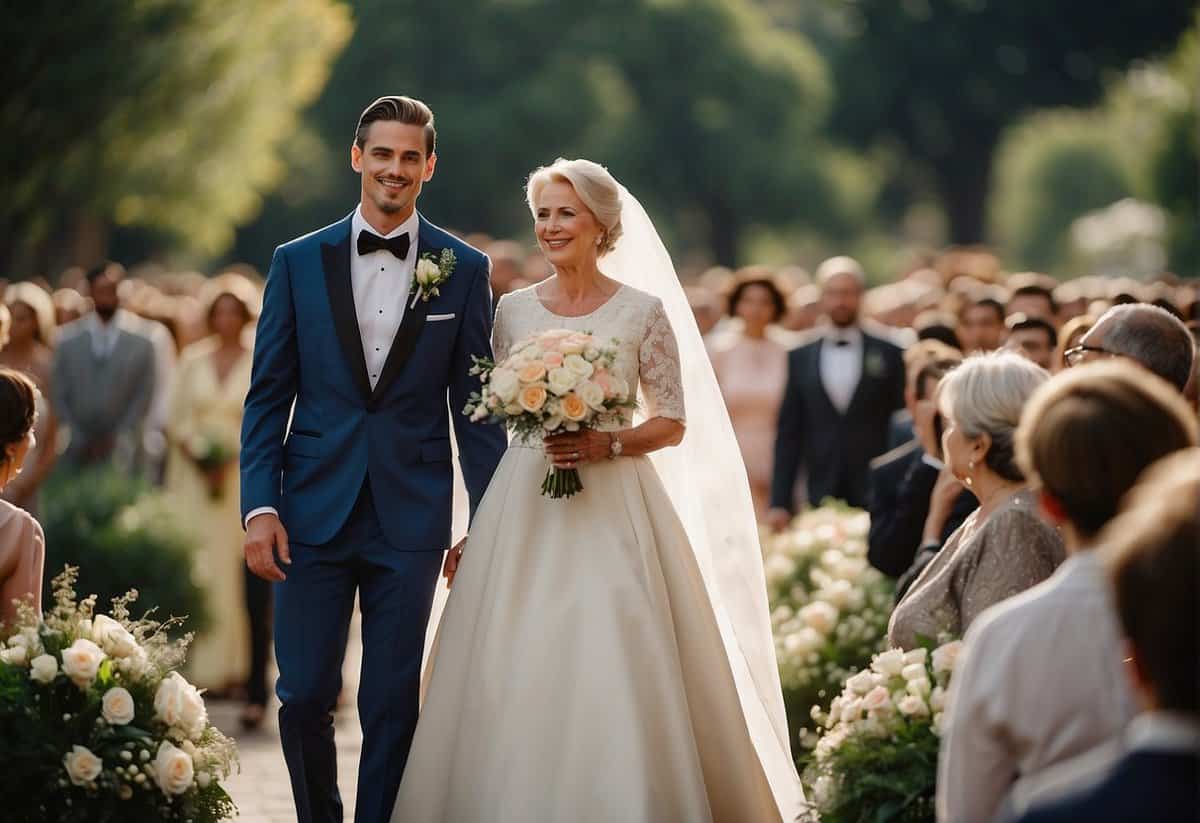
In traditional wedding processionals, the roles and the order in which the party enters can differ considerably by culture and religion. Here’s a guide to help you understand the common processional orders for various ceremonies.
Christian Wedding Processional
In a typical Christian wedding processional order, the grandparents are usually the first to walk down the aisle, followed by the groomsmen, who may double as ushers. The officiant then takes their place at the altar. The groom often walks with his parents, particularly, his mother on his arm. Next to proceed are the bridesmaids, the maid of honor, the ring bearer, and the flower girl. For more information on the order, this guide from The Knot provides a clear overview.
Jewish Wedding Processional
During a Jewish wedding processional, the rabbi or cantor often leads the way to the chuppah, a symbolic wedding canopy. The groom’s grandparents and then the bride’s grandparents may follow. The groom enters next, escorted by his parents. In traditional Jewish ceremonies, the bride’s mother and groom’s mother may also walk down the aisle together, signifying family unity. The bridesmaids and groomsmen typically walk in separately, rather than in pairs. A description of the specific order can be found at Brides.
Hindu Wedding Processional
At the start of a Hindu wedding ceremony, the groom’s arrival is marked by a joyful procession called the baraat, where the groom, commonly on a horse or in a car, is accompanied by family and friends with music and dancing. Once at the mandap (the sacred wedding altar), the groom’s parents and the bride’s mother usually join him. The bride enters last, sometimes escorted by her uncles or brothers. For more detail on the vibrant processions of a Hindu wedding, check Zola’s Expert Advice.
Catholic Wedding Processional
In a Catholic wedding processional order, procedure is quite similar to the Christian one with some nuances. The priest leads the way to the altar, followed by the groom who may be accompanied by his parents; traditionally, his mother may be on his arm as they walk down the aisle. The wedding party follows, including bridesmaids, groomsmen, flower girl, and ring bearer. However, in many Catholic ceremonies, the bridesmaids and groomsmen will process independently rather than as couples. For Catholic wedding specifics, Martha Stewart offers a detailed processional order.
Non-traditional and Inclusive Formats
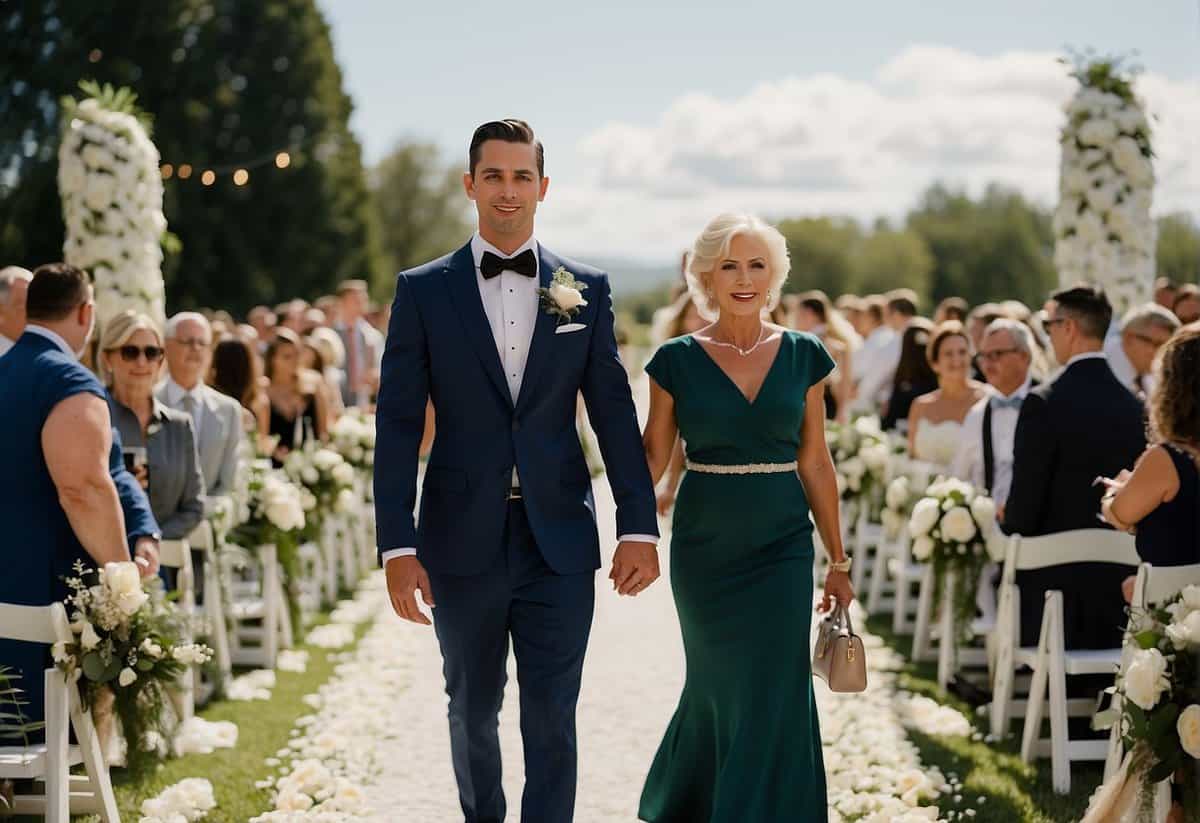
When planning your wedding ceremony, you have the freedom to move beyond tradition to create a procession that honors your unique culture, beliefs, and personal preferences. Feel empowered to design a ceremony procession that feels right for you and your partner, blending elements from different backgrounds and celebrating your union in a way that’s uniquely yours.
LGBTQ+ and Civil Ceremonies
For LGBTQ+ couples and those having civil ceremonies, the traditional wedding processional order isn’t a requirement. Instead, you may opt for a nondenominational wedding processional order that represents equality and unity. Both partners might choose to walk down the aisle together, symbolizing their journey as equals, or they might be escorted by friends or family members. In a civil ceremony, you can structure the procession to include meaningful components that express your shared values and the inclusive nature of your relationship.
- Example Procession Layout:
- Officiant: Waits at the front
- Couple: Walks down the aisle together
- Family/Friends: Follow or precede based on preferences
Incorporating Friends and Unique Elements
Personalizing your wedding ceremony allows the inclusion of friends and unique elements that may not fit in a traditional setting. If you’re questioning, “Does the groom walk down with his mother?” the answer is that in a non-traditional setting, there’s flexibility. The groom can walk solo, or be accompanied by his mother, a close friend, or even a beloved pet. The processional order can be adapted to represent the diverse and unique aspects of your life. Create a template as a guide but tailor it so that it truly reflects your personal story.
- Walk Down the Aisle:
- Solo
- With mother, father, or both
- With a friend or group of friends
- Accompanied by a pet
Remember, your ceremony should feel authentic to you and your partner, celebrating the special bond you share, no matter how you choose to walk down the aisle.
Roles and Responsibilities
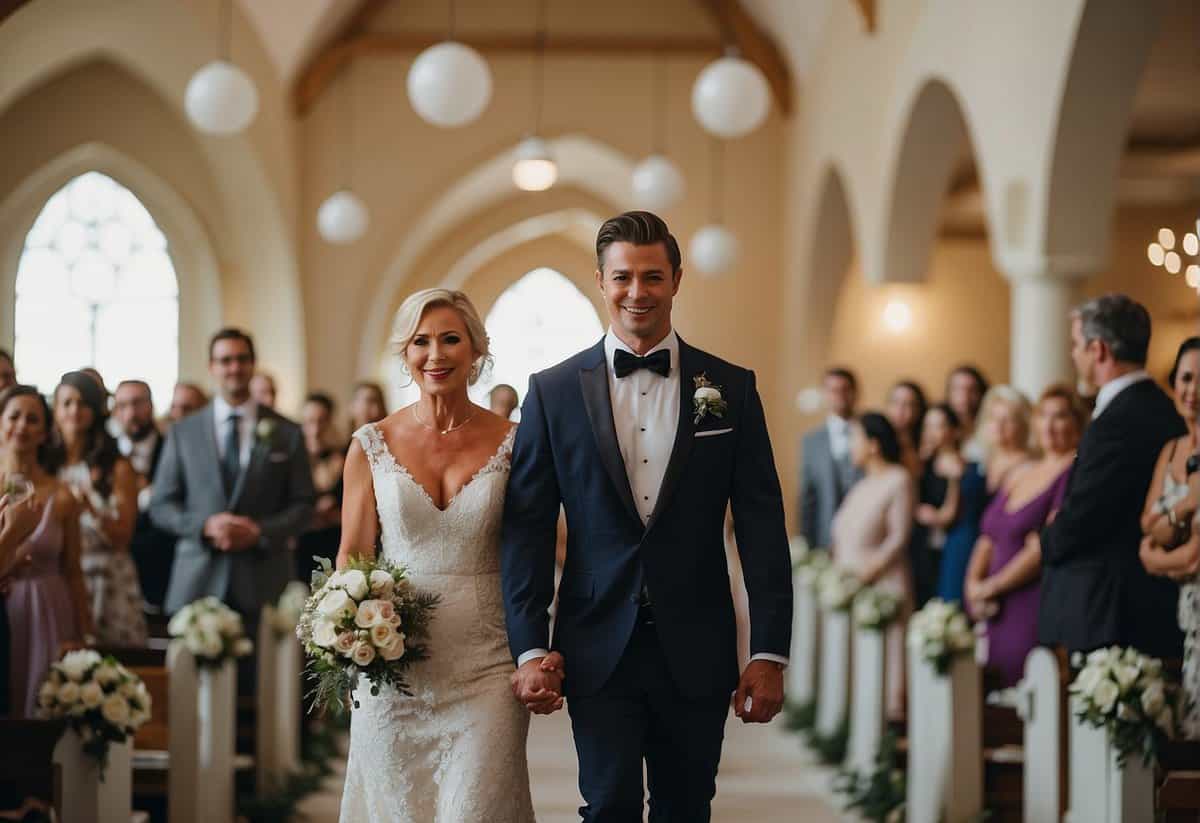
In a wedding procession, each member has a specific role to execute, from the groom himself to the family members involved. Understanding who does what ensures the ceremony runs smoothly without confusion.
Groom and Groomsmen’s Duties
Your role as the groom includes standing at the altar awaiting your soon-to-be spouse, accompanied often by groomsmen and a best man. Your groomsmen typically serve as ushers, guiding guests to their seats before taking their place in the processional order. The best man holds the rings and supports you throughout the day. On occasion, the groom walks down the aisle, and it’s becoming more common for him to be escorted by his mother.
Bride and Bridal Party’s Roles
As the bride, you are the star of the procession, usually entering last and traditionally escorted by your father. The bridal party precedes you, including bridesmaids, the maid of honor, and the matron of honor, who assist you with your dress, manage the bouquet, and provide emotional support. The order in which they walk down the aisle can mirror that of the groomsmen or align with planned choreography.
Family Involvement
Family involvement is key, as the groom’s parents and bride’s parents play distinct roles in the procession. It’s customary for the mother of the groom to be seated just before the ceremony begins, often escorted by an usher or another family member. For more insight on the parents’ roles and responsibilities, you can refer to guides like WeddingWire’s checklist and The Knot’s detailed breakdown. The father of the bride traditionally walks her down the aisle, marking her transition from his care to joining her life with her partner.
Frequently Asked Questions
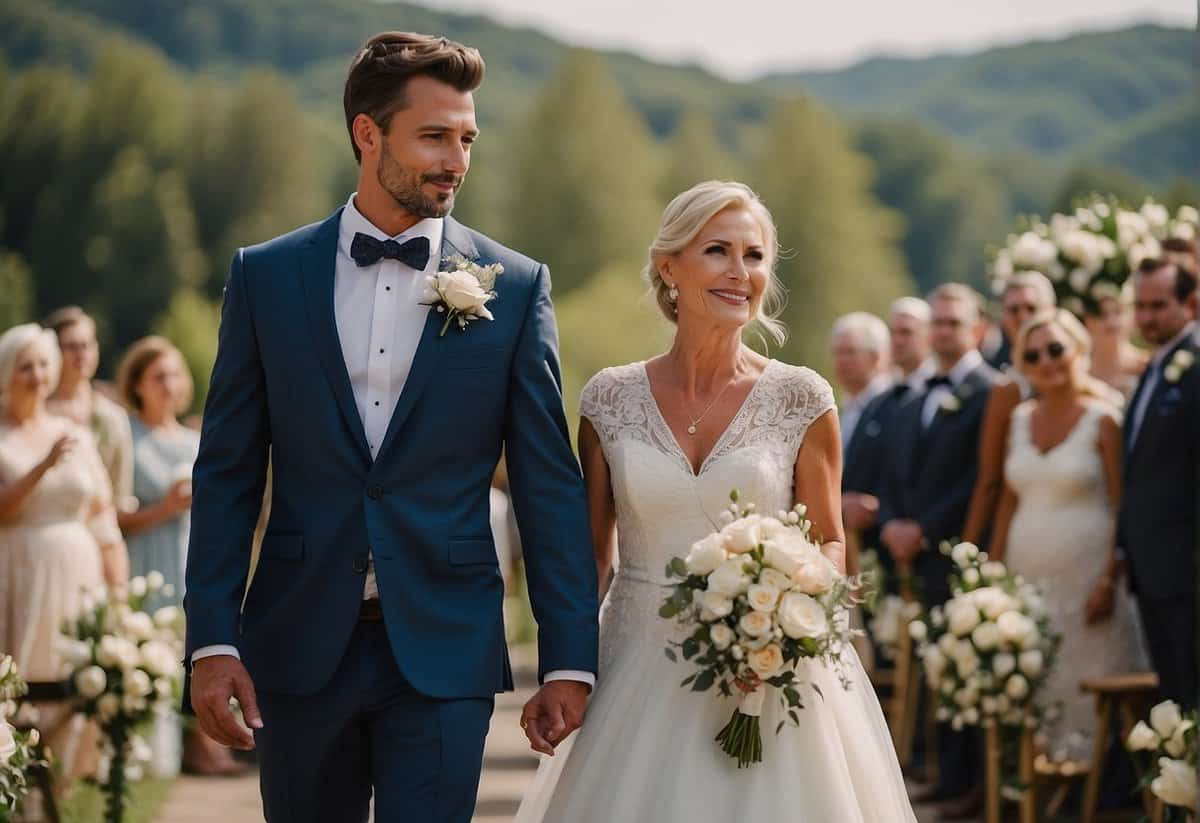
Navigating the traditions of a wedding can be complex, but when it comes to the groom’s procession, a few common practices tend to stand out. The following subsections address queries you might have about the groom’s role in the procession, touching on who accompanies him, what songs can play, and the specific roles of his parents.
Who typically accompanies the groom down the aisle during the wedding ceremony?
Traditionally, the groom may enter the ceremony venue either alone or escorted by his parents. In some ceremonies, the groom’s mother may accompany him down the aisle.
What is the customary protocol for the groom’s mother during the procession?
The groom’s mother is often one of the first to walk down the aisle, either on her own or with an escort, depending on the family and cultural traditions.
Can the groom walk down the aisle to music, and if so, what are some popular song choices?
Yes, the groom can walk down the aisle to music, and selections vary widely based on personal taste, ranging from classical compositions to modern love songs.
What role does the father of the groom have in the wedding procession?
The father of the groom may walk with the groom’s mother, or he may have a separate place in the procession, depending on the family’s preference and cultural traditions.
How is the mother of the groom traditionally seated at the ceremony?
Typically, the mother of the groom is seated in the front row on the right side just before the ceremony begins, symbolizing her place in both the procession and as part of the groom’s family.
Is it common for the mother of the groom to get ready with the groom before the ceremony?
While the mother of the groom getting ready with the groom is less common than the bride getting ready with her bridesmaids, it is an option for those who value this shared time before the ceremony.
